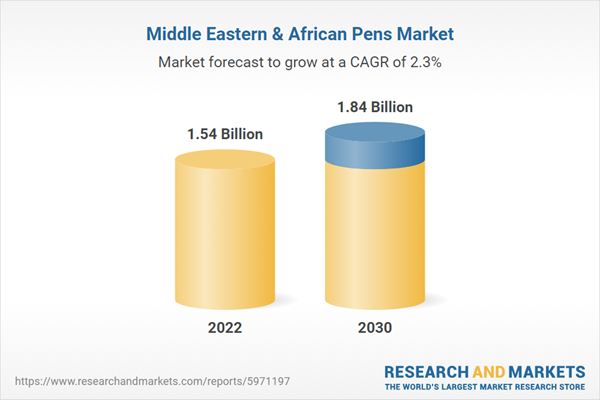Growth of the Education Sector Fuel the Middle East & Africa Pens Market
The growth of the education sector has triggered a significant surge in the global demand for pens. This expansion is attributed primarily to the increasing emphasis on literacy and education, particularly in developing countries. As more students enroll in schools and universities, the need for pens as essential writing instruments has grown exponentially. This rise in demand has led to a more significant requirement for affordable, reliable, and easily accessible writing tools, further fueling the demand for pens worldwide. According to UNESCO, the number of tertiary students worldwide increased from 100 million in 2000 to 200 million in 2020. In addition to traditional academic pursuits, the education sector has diversified into vocational and professional training programs. Students pursuing specialized courses in art, design, engineering, and architecture require specialized pens to meet their needs. Fine-tip pens for precise drawings, technical pens for architectural drafting, and other specialized writing instruments have become essential tools for these students. Consequently, this diversification has contributed to a more nuanced and varied market for pens, catering to various academic and professional requirements. The expansion of educational offerings further drives the global demand for pens. As educational institutions introduce new courses and programs, the need for writing instruments extends beyond traditional subjects. Pens are essential for students engaged in subjects such as social sciences, humanities, and natural sciences. Broadening educational horizons has ensured that pens remain indispensable tools for learners of all disciplines. The increasing importance of lifelong learning has also influenced the education sector. In a rapidly changing job market, individuals are seeking continuous skill development and education throughout their careers. This lifelong learning trend has led to sustained demand for pens as professionals engage in workshops, seminars, and online courses, often requiring writing instruments for note-taking and other tasks. The fostering of creativity and critical thinking bolstered the demand for pens. Pens are used for brainstorming, sketching ideas, and problem-solving in traditional and modern educational settings. This cognitive aspect of pen usage ensures they remain valuable tools in educational environments, prioritizing innovation and critical thought.Middle East & Africa Pens Market Overview
The Middle East & Africa has witnessed a surge in demand for pens due to cultural, educational, and economic factors. Several countries within the region, such as South Africa, Saudi Arabia, and the UAE, exhibit distinct trends contributing to the increased demand for traditional writing instruments. South Africa's strong emphasis on education has fueled the demand for pens. With a growing student population and a commitment to quality education, pens are essential for students to study. The Government of South Africa considers education the country's highest domestic priority and the single greatest long-term challenge. Education receives the most significant share of government spending (5% GDP), with 21% of noninterest allocations for primary and higher education. South Africa's corporate sector continues to thrive, requiring pens in various professional settings, including offices and businesses. In Saudi Arabia, traditional pens are still commonly used in official documentation and business transactions, where handwritten signatures on contracts and legal documents are often required. This legal and administrative reliance on traditional pens ensures a steady demand for these writing instruments. The UAE, known for its economic prosperity and modernity, has a thriving luxury and premium pens market. The country's affluence and cosmopolitan lifestyles have increased interest in high-end writing instruments as status symbols and luxury gifts. The UAE's diverse population, including a substantial expatriate community, also contributes to the demand for pens, as people from various backgrounds value writing in different contexts. All these factors contribute to the market growth of pens in the Middle East & Africa.Middle East & Africa Pens market Segmentation
The Middle East & Africa pens market is segmented based on category, product type, distribution channel, and country.Based on category, the Middle East & Africa pens market is bifurcated into refillable and single-use. The refillable segment held a larger share in 2022.
By product type, the Middle East & Africa pens market is segmented into ballpoint, fountain, gel, and others. The ball point segment held the largest share in 2022.
By distribution channel, the Middle East & Africa pens market is segmented into supermarkets and hypermarkets, specialty stores, online retail, and others. The specialty stores segment held the largest share in 2022.
Based on country, the Middle East & Africa pens market is segmented into Saudi Arabia, the UAE, South Africa, and the Rest of Middle East & Africa. The Rest of Middle East & Africa dominated the Middle East & Africa pens market in 2022.
A T Cross Co LLC, C Josef Lamy GmbH, Flair Writing Industries Ltd, Montblanc-Simplo GmbH, Pelikan International Corp, Sailor Pen Co Ltd, STAEDTLER Mars GmbH & Co KG, and The Parker Pen Co are some of the leading companies operating in the Middle East & Africa pens market.
Table of Contents
Companies Mentioned
- A T Cross Co LLC
- C Josef Lamy GmbH
- Flair Writing Industries Ltd
- Montblanc-Simplo GmbH
- Pelikan International Corp
- Sailor Pen Co Ltd
- STAEDTLER Mars GmbH & Co KG
- The Parker Pen Co
Table Information
| Report Attribute | Details |
|---|---|
| No. of Pages | 74 |
| Published | February 2024 |
| Forecast Period | 2022 - 2030 |
| Estimated Market Value in 2022 | 1.54 Billion |
| Forecasted Market Value by 2030 | 1.84 Billion |
| Compound Annual Growth Rate | 2.3% |
| Regions Covered | Africa, Middle East |
| No. of Companies Mentioned | 8 |









